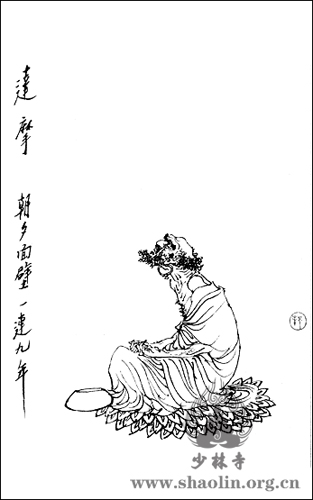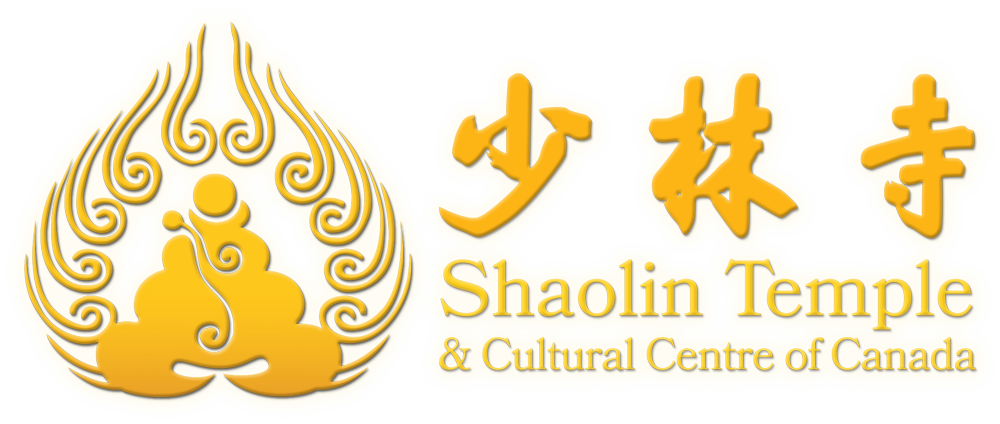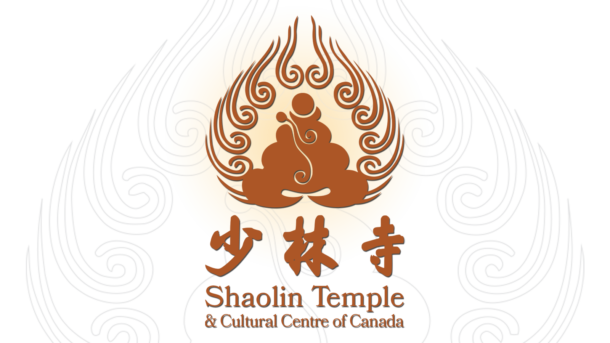Chan Buddhism
Chan is short for Chan-na, which was originally transliterated from Indian Dhyana and translated as meditative state, and it is also known as Zen, the equivalent term in Japanese.
Dharma Master Bodhidharma initiated Chinese Chan Buddhism which “points directly to one’s mind and does not stand upon words” but stresses a “special transmission outside scriptures”. Through the efforts of second Patriarch Huike, third Patriarch Sengcan, fourth Patriarch Daoxin, fifth Patriarch Hongren and sixth Patriarch Huineng, Chan tradition finally turns to be the largest Buddhist school in China. As a result, Bodhidharma was honored as the first Patriarch of Chan Buddhism and Shaolin Temple renowned as the origin of Chan Buddhism.
Chan Buddhism originated from Bodhidharma, prevailed since the Sixth Patriarch Huineng and developed into the mainstream of Chinese Buddhism after the middle and late Tang Dynasty. The Chan School has been passed down from the patriarchal Chan tradition which maintains a special transmission not relying on scriptures and dogma, and focuses on realizing human nature upon sudden attainment of enlightenment.
Chan Buddhism is the crystallization of Chinese cultural integration with Indian Buddhism. Bodhidharma, the 28th Patriarch of Buddhism from India, founded the Chinese Chan School and passed on to Huike, Sengcan, Daoxin, Hongren and Huineng. After Bodhidharma and successive patriarchs, Chan Buddhism flourished and developed into five schools, namely, Weiyang, Linji, Caodong, Fayan and Yunmen. Therefore, one flower with five petals is often referred to as the Chan origin blossoming into five schools in China. The Linji school was further divided into the Yangqi and Huanglong lines, which, together with the Five Families, formed the Seven Sects. These lineages are commonly referred to as the Five Families and Seven Sects.
As one of world religions, Buddhism is founded by Siddhartha Gautama, a prince of Lumbini Kingdom in ancient India (the present Nepal area). As Gautama came from the Shakya clan, he was also called Shakyamuni, meaning sage of the Shakya. While fairly widespread in Asian countries, Buddhism was first introduced to China during the Eastern Han Dynasty (25A.D.-220 A.D.) Buddhism is the teachings of Buddha rather than a religion of Buddha worship; it is neither a religion nor a philosophy. Though colloquially referred to as a religion, Buddhism in nature is the path of eliminating sufferings, cultivating perfect wisdom and attaining enlightenment. A few hundred years after Shakyamuni passed away, Buddhism was spread throughout the Indian subcontinent. As doctrinal differences arose, various schisms came into. Two main divisions are Mahasanghika and Theravada while the later is the predominant religion of Sri Lanka and most continental Southeast Asia and later introduced to Yunnan, China.
Introduction and Spread of Buddhism in China
Buddhism first reached China during the Han period (202BC-220AD). There are three main schools of Chinese Buddhism: Han Buddhism, Tibetan Buddhism and Southern Buddhism.During the North and South dynasties (420-581AD), Buddhism had become extremely popular and many Buddhist towers, pagodas, and temples were being built.Buddhism flourished under the royal patronage of rulers in the Sui (581-617 AD) and Tang (618-907 AD) Dynasties. By then Chinese Buddhism has gradually matured.
During the late period of feudal society, Han Buddhism declined and monasteries decayed; monks were ignorant and superstitions prevailed. In modern times, with Buddhist advocates in the lead, Buddhism has maintained continuous development in every aspect.
Modern development of Buddhism in China
After the founding of New China in 1949, Buddhism underwent the nationwide land reform to end the feudal landlord and peasant system as well as other exploiting systems. Its influence in Chinese religious life grew. In 1953, the Buddhist Association of China was founded in Beijing and master Yuanying was elected the first President. Since 1980s, the liberal policy regarding religious belief has been resumed and implemented, to promote the development of Chinese Buddhism.
Buddhism in China fell into three categories in terms of language families, namely, Chinese, Tibetan and Pali. The first two are of the Mahayana Buddhism while the last one the Theravada Buddhism.
Tibetan Buddhism is widespread mainly in Tibet, Yunnan, Sichuan, Qinghai, Xinjiang, Gansu, Neimeng, and so forth. In the late 10th century, it was split into different schools of Tibetan characteristics.
Theravada Buddhism in China’s southern areas is generally spread in many regions of Yunnan Province. The masses of ethnic minorities including Dai people, Bulan people, A’chang people and Wa people believe in Theravada Buddhism.


